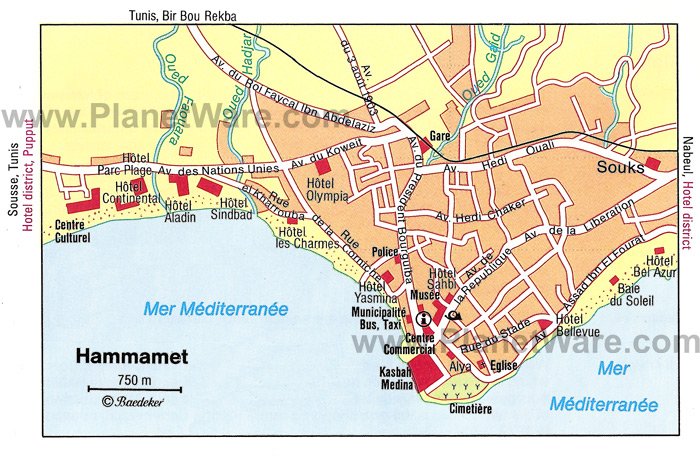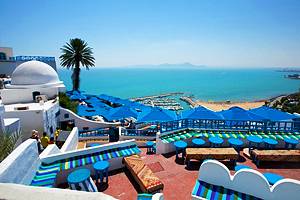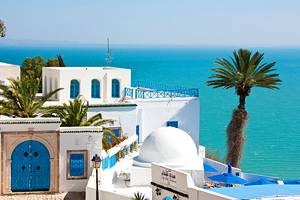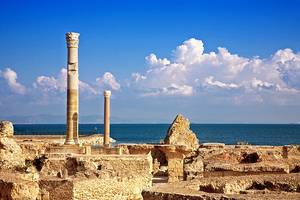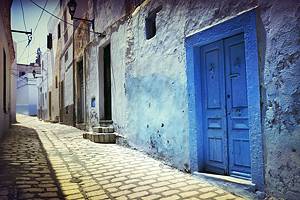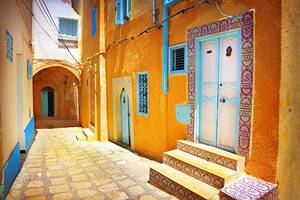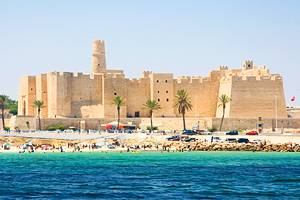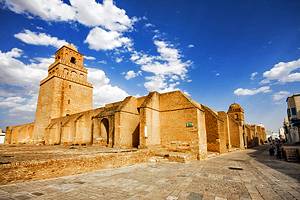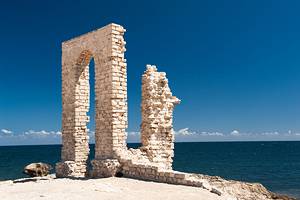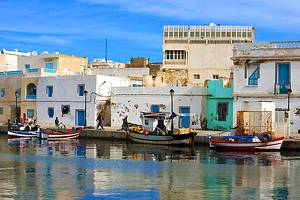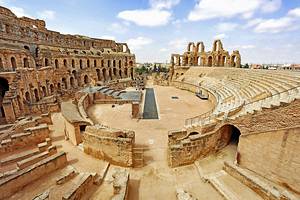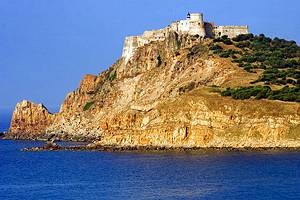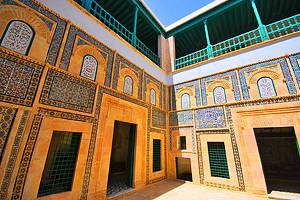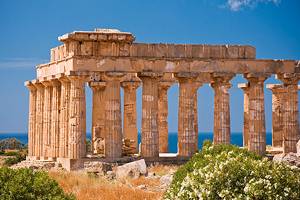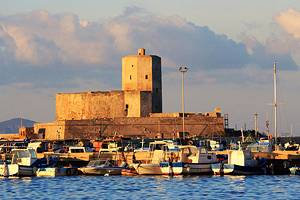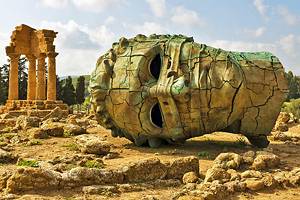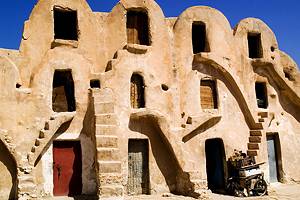Things to Do in Hammamet
Hammamet, with its idyllic Mediterranean location, snugly wrapping around a cove on the Cap Bon Peninsula, is one of Tunisia's most popular places to visit.
This is Tunisia's original tourism resort. Visiting its sandy beaches and pretty, well-preserved medina (old town) are the main things to do, and the town itself is a gentle introduction to the culture and traditions of North Africa.
Sightseeing here usually comes second to lazing about and soaking up the endless sunny weather, but if you find yourself itching to get off the beach and seek out other things to do, Hammamet is perfectly placed as a base to explore the rest of Cap Bon's tourist attractions.
Find out how to spend your time with our list of the top tourist attractions in Hammamet.
- Stroll Hammamet Medina
- Soak Up the Sun on Hammamet Beach
- Visit Hammamet Cultural Center (Villa Sebastian)
- Hammamet Kasbah
- Explore the Town of Nabeul
- Take the Kids to Carthage Land
- Discover Punic History at Kerkouane
- Road Trip to Cap Bon's Northern Tip
- Day Trip to Kelibia
- Soak in the Hot Springs of Korbous
- Wander the Medina of Soliman
- Drive the Côte du Soleil
- Map of Things to Do in Hammamet
Stroll Hammamet Medina
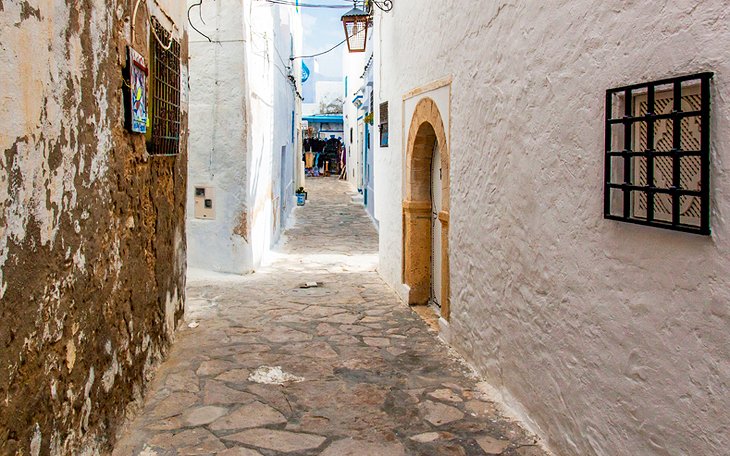
Surrounded by its original 15th-century walls, Hammamet's maze of narrow and winding lanes within the town's medina (old town) hosts a wealth of well-preserved traditional Tunisian architecture.
Two of the most important buildings in the district are the Great Mosque and the Sidi Abdel Kader Mosque, which adjoin each other.
The Great Mosque was built in the 15th century and restored in 1972. Its rectangular minaret is a particularly fine example of Islamic architecture.
The Sidi Abdel Kader Mosque was built in 1798 and now functions as a madrassa (Islamic school).
Non-Muslims cannot enter either building, but it is worthwhile passing by to admire the facades.
Some of the medina's alleyways have been covered, so even in the heat of summer, the medina remains cool and shady – making an exploration here a pleasant respite from the harsh sun.
This is one of Cap Bon's best places to visit for shopping opportunities, with local embroidery, ceramics, leather goods, and carpets all on display though do be aware that due to Hammamet's popularity as a tourism hot spot, wares tend to be on the pricey side within the medina shops.
The main entrance into Hammamet's medina is off Avenue Habib Bourguiba.
Soak Up the Sun on Hammamet Beach
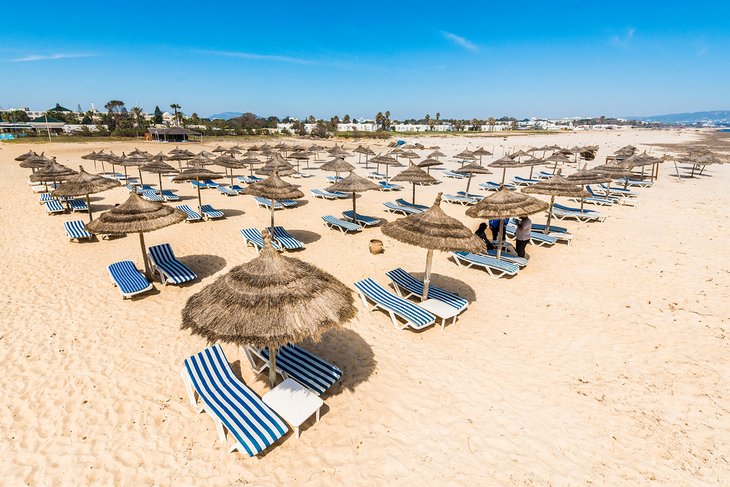
For most visitors to Hammamet, the beach is the main attraction and where they will be spending most of their time.
Hammamet's main beach of soft, white sand stretches southwest from the medina to the Hammamet Marina, lined by family-friendly beach resorts along the way, most of which have claimed their own private patches of sand.
There are water sports operators offering kayak and paddleboard hire, as well as camels available for beach rides if you want to do something more than sunbathing. But if you are looking for a full day of sun slothing, there are plentiful sun loungers and shades for rent.
Visit Hammamet Cultural Center (Villa Sebastian)

In Hammamet's southern hotel zone (beyond the Hotel Continental), the Cultural Center is housed in the sumptuous Villa Sebastian.
George Sebastian, a wealthy Romanian who was the first of many wealthy Europeans to settle in Hammamet during the early 20th century, built the structure in the 1920s.
It's open daily for visitors to walk through and admire the architecture, as well as visit the small contemporary art exhibitions held on site.
The beautiful villa gardens host the Hammamet International Festival of Music and Drama every July and August, Hammamet's biggest annual event. If you're in town at this time, don't miss it.
If you've come to see the villa and have an interest in history, head further along the coast (between the Samira Club and Tanfous Hotel) to find the excavation site of the Roman settlement of Pupput.
The ruins of the site (Hammamet's first settlement) are sparse and are probably only of interest to the most enthusiastic history buff.
Address: 97 Avenue I'ONU, South Hammamet
Hammamet Kasbah
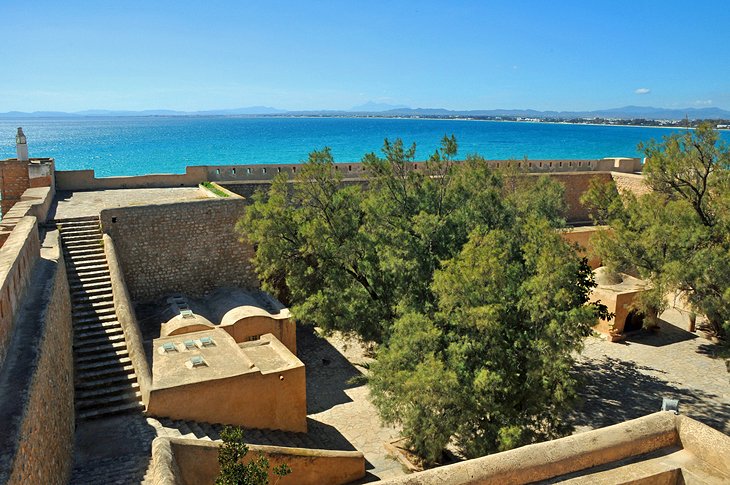
The 13th-century Kasbah of Hammamet isn't as well preserved or impressive as the Kasbah of Sousse, but it is still worth visiting, particularly if you're looking for a side of history to complement your beach time.
There is an interesting museum inside that explains Hammamet's colorful pirate lair history and later Spanish occupation.
While here, don't miss climbing up to the top of the ramparts for magnificent views across the medina and picturesque fishing harbor. It's a great place to come for sunset photos of the Mediterranean.
The entrance to Hammamet's kasbah is just off Avenue Habib Bourguiba.
Explore the Town of Nabeul
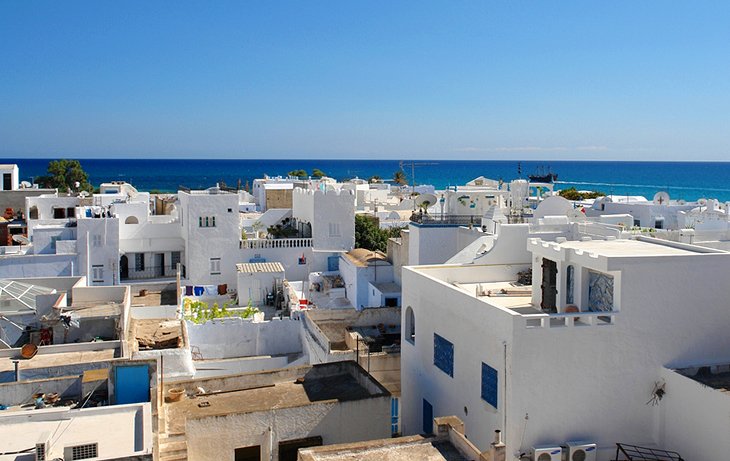
Nabeul, 10 kilometers north of Hammamet, is the Cap Bon Peninsula's largest town, edged by a long sandy beach extending around the Gulf of Hammamet.
Surrounded by intensively cultivated agricultural land, the town's Friday market is a bustle of fresh produce and local action that photographers will love.
It's also a craft-making center, and shoppers can pick up lovely locally made pottery and plaited mats. Textiles are available here at cheaper prices than in Hammamet.
While in town, add a visit to Nabeul's Archaeological Museum (Avenue Habib Bourguiba) onto your things to do list. This small but interesting museum provides a comprehensive introduction to Cap Bon's history and has particularly good exhibits of Punic and Roman artifacts excavated from the peninsula's archaeological sites.
Afterwards, art fans should check out Hub Creative (Avenue Habib Thameur). This art gallery promotes Tunisian artisans and hosts rotating exhibitions of contemporary ceramics.
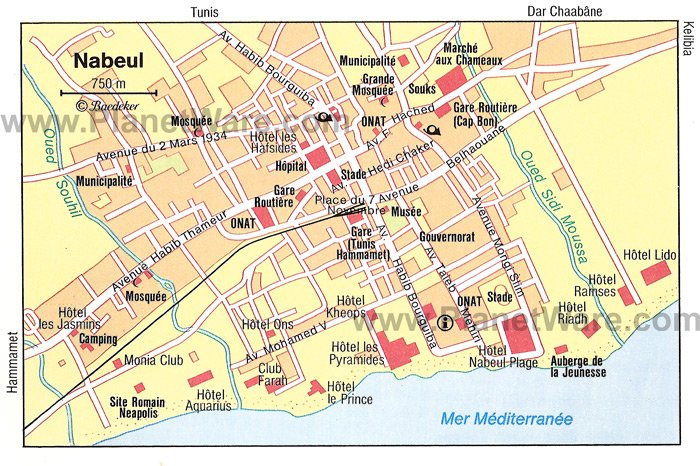
Take the Kids to Carthage Land

Tunisia's biggest amusement park, Carthage Land combines both water park rides and theme park rides, making it a great option for a full family day off the beach.
For younger children, there's a dedicated zone with gentle rides, soft-play areas, and a 5D cinema, as well as the Aladin Park experience with a fun house and mirror maze.
Carthage Land's aqua park also has plenty to keep little ones busy, with pool playground equipment, small slides, and a dedicated kids' pool.
For older children who need to cool off, the aqua park has waterslides and a wave pool. The main theme park rides for older kids wanting some thrills and spills are the King Kong roller coaster and the mind-blaster ride.
There's also a small cultural village experience within Carthage Land, with dioramas depicting traditional Tunisian life.
Carthage Land is 10 kilometers south of central Hammamet.
Official site: https://hammamet.carthageland.com.tn/
Discover Punic History at Kerkouane
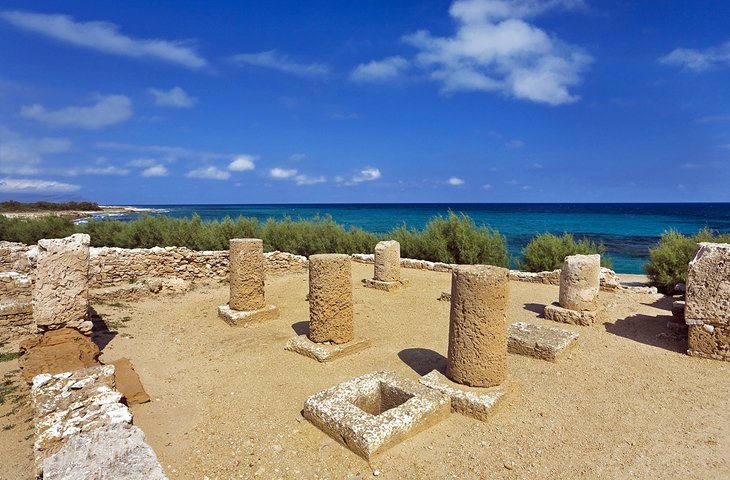
Only discovered in 1952, the site of Kerkouane, 86 kilometers north of Hammamet, is thought to have been settled by the Phoenicians from the 6th century BCE, long before Carthage was founded.
A village of fishermen and dyers, it was razed to the ground by the Romans during the Third Punic War and never rebuilt, so the original layout of the Punic town has been preserved intact.
The town was laid out in the shape of a horseshoe and enclosed by a double ring of walls with two gates.
Excavations have revealed mainly the network of streets and the foundations of buildings, with marble-floored houses that boast red and white mosaic decoration (much of which has been preserved).
In many houses, the rooms were laid out around a central courtyard with a fountain. Particularly notable is that almost every house had its own bathroom. There are also drainage channels, which show that the town had a highly developed drainage system.
Also of interest are the remains of a dye factory, with tubs hewed from the rock in which the shellfish (murex) used to make the purple dye were collected.
The Phoenicians had a monopoly on the production of murex dye, which was the most prized dye of ancient times (almost 5,000 shellfish being required to produce a gram of dye).
A small museum beside the excavation site illustrates the history of Kerkouane and the archaeological work that has been carried out since 1966. The exhibits contain plenty of smaller artifacts unearthed here including ceramics, jewelry, and coinage.
Road Trip to Cap Bon's Northern Tip
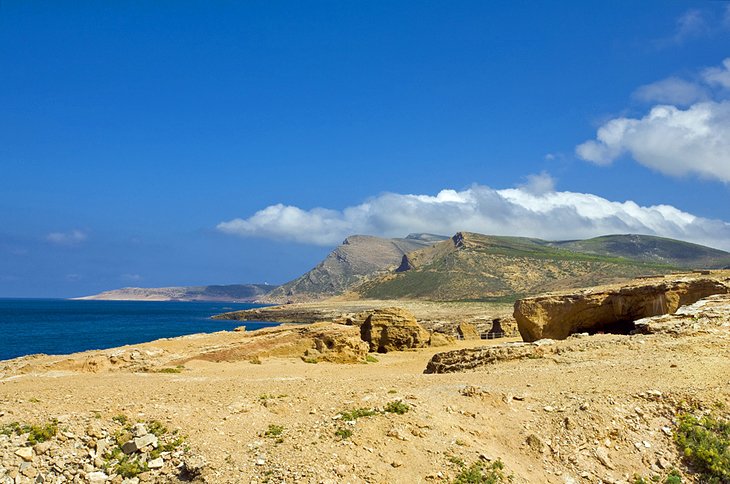
At the northern end of Cap Bon is the fishing village of El Haouaria, which is famous for its falcon spotting opportunities during spring, when the birds descend here as part of their migration to Europe.
About 109 kilometers north of Hammamet, the village has a long tradition of training falcons to hunt quail. If you visit in May try to catch their Falconry Festival, when you can witness the skills of the village falconers in action.
For excellent views over the Mediterranean, head up the small 390-meter-high peak of Jebel Sidi Abiod, which sits right on the tip of the peninsula.
A few kilometers northeast are El Haouaria's Roman caves, formed by quarrying of the sandstone coastal cliffs, first by the Carthaginians and later by the Romans. Shafts of up to 30 meters long can be seen.
Day Trip to Kelibia
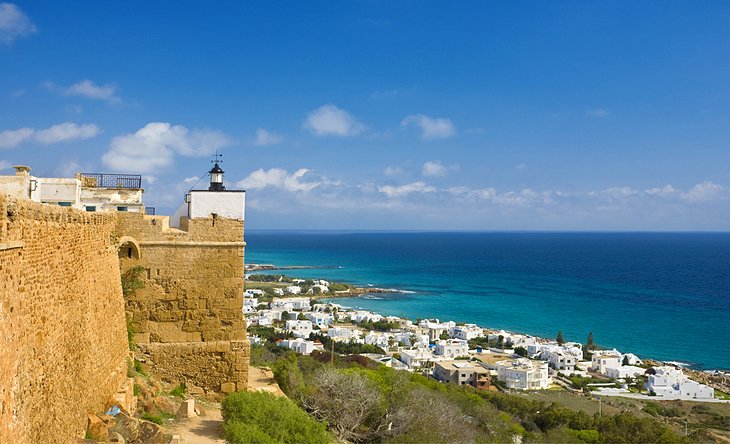
One of the best day trips from Hammamet for history fans is to the small town of Kelibia, which is crowned by a fortress on a 150-meter crag looming over the town.
Originally built by the Byzantines, Kelibia Fortress was enlarged and strengthened under the Hafsid dynasty.
The thick fortress walls have been excellently preserved, and if you climb up into the bastions, you'll be rewarded with magnificent views across the Mediterranean. On a clear day, you can pick out the form of Sicily in the far distance.
Kelibia is home to plenty of beach action. The best strip of sand is just north of the town center. Mansoura Beach is a long stretch of soft white sand that is hugely popular with Tunisian families on weekends.
Kelibia is 76 kilometers north of Hammamet
Soak in the Hot Springs of Korbous
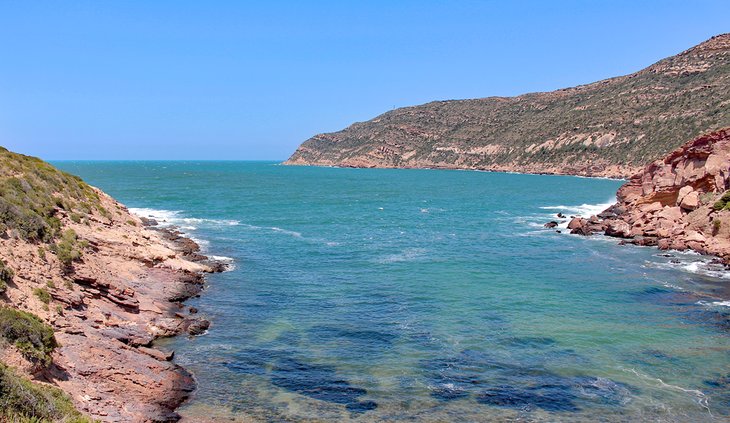
The hot springs of Korbous, 68 kilometers northwest of Hammamet, have been frequented since Roman times, when the area was known as Aquae Calidae Carpitanae.
Ahmed Bey rediscovered the springs in 1801 and established a spa complex here.
Rich in minerals, the water is said to help the treatment of skin conditions such as eczema and also to help ease the pain of rheumatism and arthritis.
There are more hot springs to check out just two kilometers north of Korbous. Of particular note, Hamma el Atrous Springs have a wonderful setting, with pools cascading down into the sea and steaming temperatures of up to 50 degrees Celsius.
Wander the Medina of Soliman
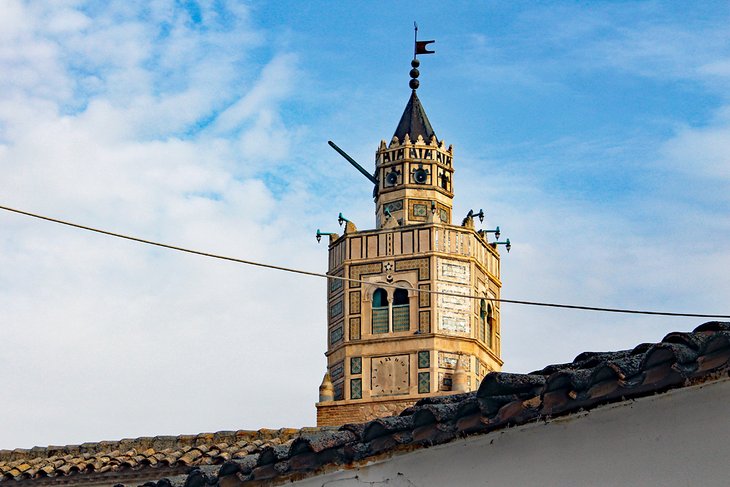
This local market center, on the Cap Bon Peninsula's west coast, about 40 kilometers north of Hammamet, is surrounded by agricultural land and has a picturesque medina (old town) district, where the architecture has a distinctively Andalusian feel to it.
The 17th century Malikite Mosque, roofed with semi-circular tiles, and the Hanafite Mosque, with its octagonal minaret, are two of the most interesting buildings to search out while threading through the medina alleys.
If you're just after a lazy afternoon in the sun though, the Soliman Plage (beach) is a popular and pretty stretch of sand.
Drive the Côte du Soleil
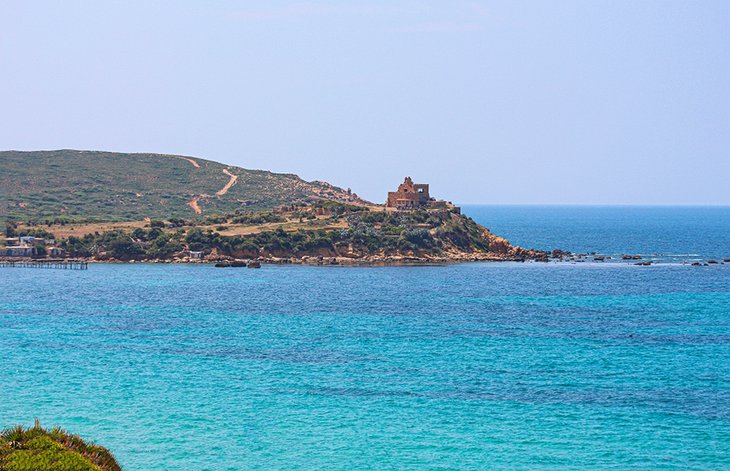
About eight kilometers north of Soliman, the MC128 highway runs along the cliff-fringed coast of Djebel Bou Korbous, known as the Côte du Soleil (Sunshine Coast). This 12-kilometer stretch, about 48 kilometers north of Hammamet, is one of the most beautiful roads in Tunisia.
On the right, steep hills rise up to 419 meters, while on the left side, sheer cliffs tumble directly down to the sea.
There are various viewpoints along the road, where you can pull over and soak up views extending as far west as Carthage.

